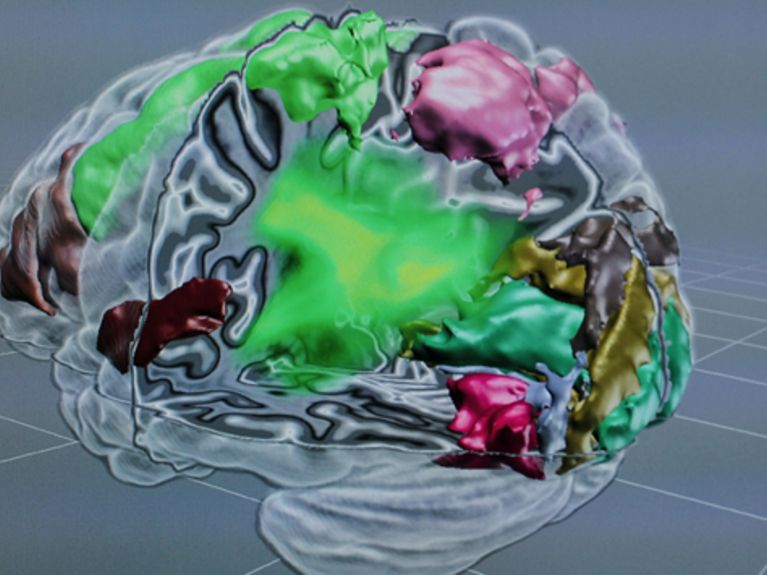Human Brain Project
An interim assessment

Image: Forschungszentrum Jülich
The multi-billion euro Human Brain Project is one of the largest flagship initiatives in the arena of European science. Research scientists are trying to understand how the human brain functions. But the beginning was difficult – the project stood on the brink. Now it seems to have taken a giant step forward.
A few days ago an agreement was signed, according to which the European Commission shall continue to fund the Human Brain Project (HBP) for the next two years with 89 million euros. This involves nothing less than an attempt to understand the basic principles underlying our thought processes. Since 2013, the HBP has proven its dedication to this challenge with both concentrated and diverse expertise – more than 120 research institutes from 24 countries have been working together in the context of the HBP.
‘In the first three years, we have already gained significant knowledge and built essential foundations for future research’, said Katrin Amunts, Director of the Institute of Neuroscience and Medicine (INM) at the Forschungszentrum Jülich. The ‘HBP Collaboratory’ for example is more or less the entry portal to HBP and accessible to research scientists from all over the world. The online platform offers various tools, databases and simulations, with whose help the data collected so far from the Human Brain Project can be used for proprietary scientific issues. ‘This is one of the most important project accomplishments so far, even though many functions and tools have yet to be added so that scientists can make effective use of it worldwide’, said Katrin Amunts, who holds the office of Scientific Director of the Human Brain Project.
Just the computer capacity on its own, for example, which has been made available by the Forschungszentrum Jülich through a network of mainframe computers, opens entirely new possibilities for smaller institutions and research groups. ‘We have huge data sets. Thanks to our computing power and newly-developed analysis programmes, we can increasingly gain knowledge from it’, said Amunts.
Neuroscientists are assessing the efforts of the HBP in the area of, in particular, Big Data and its analysis, as correspondingly positive and appropriate. Martin Walter, Director of the section Translational Psychiatry at the University Clinic Tübingen said: ‘The digital data processing of whole-brain information is groundbreaking today in terms of the analysis of processes and changes in those living. This is because the neurobiological foundations of structural and functional processes can for the most part only be comprehended in light of actual brain information’.
Precisely what potential the HBP has with its network of computers and research scientists harbours can be seen in the enormous acquisition of knowledge that the project has thus far provided with 272 publications in technical journals. One of the highlights – appearing in the technical magazine Cell – is a digital reconstruction of the nerve connections of a certain brain region (the neocortex), which plays an important role in the perception of sensual perception and execution of movement. Many other publications, such as the magazines Nature Communications, Scientific Reports and Neuron substantiate the high quality of the scientific studies.
With the granting of subsidies, the Commission has verified the HBP working plans for the next two years. This had by no means been a sure thing, since the project made headlines in the beginning phase primarily due to discord in reference to the scientific alignment and the organisational structure. From the very beginning there was criticism of Henry Markram from the Ecole Polytechnique Fédérale de Lausanne (EPFL), who directed the project. The decision-making process was said to be undemocratic, according to scientists. After a mediation process under the guidance of Wolfgang Marquardt, Chairman of the Board of the Forschungszentrum Jülich, the management structures have now been broadened. ‘The restructuring steps have served the project well’, opined Katrin Amunts. ‘If we imagine the huge HBP as a ship, then the ship has successfully completed the loading and sorting phase, left the harbour and survived its first tempest’. And they can now look ahead with optimism. Full speed ahead!
Readers comments